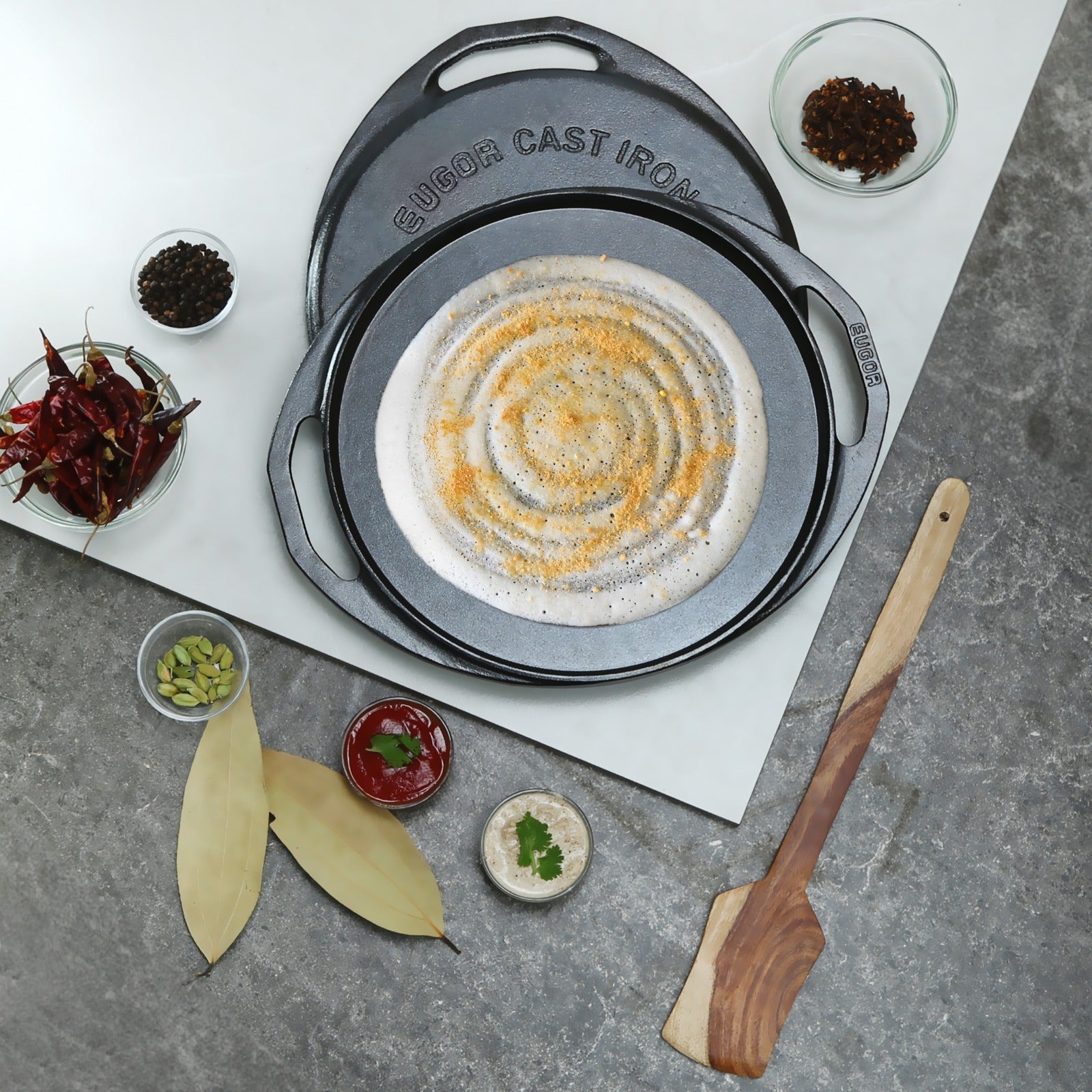
Cast Iron vs. Non-Stick: Which Cookware Is Right for You?
In the world of culinary exploration, choosing the right cookware can be as important as selecting the perfect ingredients for your recipes. When it comes to cookware, two popular options often vie for your attention: cast iron and non-stick. Each has its own set of advantages and drawbacks, making the decision a matter of personal preference. In this article, we'll explore the characteristics of both cast iron and non-stick cookware, helping you decide which one suits your cooking style and needs.
Table of Contents
- Introduction
-
The Case for Cast Iron
- 2.1 The Durability of Cast Iron
- 2.2 Heat Retention and Distribution
- 2.3 Natural Non-Stick Properties
-
The Charm of Non-Stick Cookware
- 3.1 Easy Food Release
- 3.2 Minimal Oil Requirement
- 3.3 Effortless Cleaning
-
Comparing Cooking Techniques
- 4.1 Searing and Browning
- 4.2 Delicate Foods
- 4.3 Versatility
-
Maintenance and Care
- 5.1 Seasoning Cast Iron
- 5.2 Avoiding Scratches in Non-Stick
-
Health Considerations
- 6.1 Seasoning Oils
- 6.2 PFOA Concerns
- Environmental Impact
- Budget-Friendly Options
- Conclusion
-
FAQs
- 10.1 Which is better for high-heat cooking, cast iron, or non-stick?
- 10.2 Can I use metal utensils with non-stick cookware?
- 10.3 Is cast iron cookware suitable for induction stovetops?
- 10.4 How often should I re-season my cast iron skillet?
- 10.5 What's the best way to dispose of old non-stick pans?
Introduction
Cookware is an integral part of every kitchen, and choosing the right type can significantly impact your culinary endeavors. Cast iron and non-stick cookware represent two distinct approaches to cooking, each with its own merits and considerations.
The Case for Cast Iron
2.1 The Durability of Cast Iron
Cast iron cookware is renowned for its durability. These heavy-duty pans and skillets can last for generations if cared for properly. They are practically indestructible, able to withstand high heat, abrasion, and even the occasional drop.
2.2 Heat Retention and Distribution
Cast iron's ability to retain and evenly distribute heat is unmatched. This makes it ideal for tasks like searing steaks or baking where consistent heat is crucial for excellent results.
2.3 Natural Non-Stick Properties
With proper seasoning and maintenance, cast iron develops a natural non-stick surface over time. This means you can cook with less oil, making it a healthier option.
The Charm of Non-Stick Cookware
3.1 Easy Food Release
Non-stick cookware, as the name suggests, prevents food from sticking to the surface. This is particularly useful for delicate dishes like omelets and pancakes, where flawless food release is essential.
3.2 Minimal Oil Requirement
Cooking with non-stick pans requires very little oil, making it a great choice for those aiming to reduce their fat intake without compromising on flavor.
3.3 Effortless Cleaning
Cleaning non-stick cookware is a breeze. Most of the time, a simple wipe-down with a soft sponge is all it takes to restore them to their pristine condition.
Comparing Cooking Techniques
4.1 Searing and Browning
When it comes to achieving a perfect sear or a deep brown crust, cast iron reigns supreme. Its ability to reach high temperatures makes it ideal for these cooking techniques.
4.2 Delicate Foods
Non-stick cookware excels at handling delicate foods that can easily fall apart, such as fish or eggs. The non-stick surface ensures easy flipping and minimal breakage.
4.3 Versatility
Both cast iron and non-stick have their specialties, but if you want a versatile option that can handle a wide range of dishes, non-stick might be your best bet.
Maintenance and Care
5.1 Seasoning Cast Iron
To maintain the non-stick properties of cast iron, regular seasoning is essential. It involves applying a thin layer of oil and heating the cookware to create a protective coating.
5.2 Avoiding Scratches in Non-Stick
While non-stick pans are easy to clean, they are also susceptible to scratches. Using wooden or silicone utensils is key to preserving their non-stick surface.
Health Considerations
6.1 Seasoning Oils
Be mindful of the oils you use for seasoning cast iron. Opt for oils with a high smoke point, like vegetable or flaxseed oil, to avoid the formation of harmful compounds.
6.2 PFOA Concerns
Some older non-stick cookware contained perfluorooctanoic acid (PFOA), a chemical that raised health concerns. However, modern non-stick pans are typically PFOA-free.
Environmental Impact
While both cast iron and non-stick cookware have their environmental pros and cons, cast iron's longevity and minimal need for replacement make it a more sustainable choice in the long run.
Budget-Friendly Options
Non-stick cookware tends to be more budget-friendly initially, but cast iron's durability means you may not need to replace it as often, making it a cost-effective choice in the long term.
Conclusion
In the battle of cast iron vs. non-stick, there's no clear winner. Your choice should align with your cooking style, preferences, and values. If you enjoy versatility and easy cleanup, non-stick might be your go-to option. On the other hand, if you savor the art of searing and appreciate cookware that can last a lifetime, cast iron could be your top pick. Ultimately, both have a place in the modern kitchen.
FAQs
10.1 Which is better for high-heat cooking, cast iron, or non-stick?
Cast iron is better suited for high-heat cooking due to its excellent heat retention and distribution.
10.2 Can I use metal utensils with non-stick cookware?
It's best to avoid metal utensils with non-stick cookware to prevent scratches. Opt for wooden or silicone utensils instead.
10.3 Is cast iron cookware suitable for induction stovetops?
Yes, many cast iron cookware pieces are compatible with induction stovetops. Just check the manufacturer's specifications.
10.4 How often should I re-season my cast iron skillet?
You should re-season your cast iron skillet as needed, which typically means when food starts sticking or the seasoning appears damaged.
10.5 What's the best way to dispose of old non-stick pans?
To dispose of old non-stick pans responsibly, check your local recycling guidelines or consult with a recycling center. Many non-stick pans can be recycled.
In the end, your choice of cookware should align with your cooking style, preferences, and values. Cast iron and non-stick both have their merits, so go ahead and make the selection that suits you best on your culinary journey. Happy cooking! Shop Our cast iron cookware for your family.
- Choosing a selection results in a full page refresh.
!















